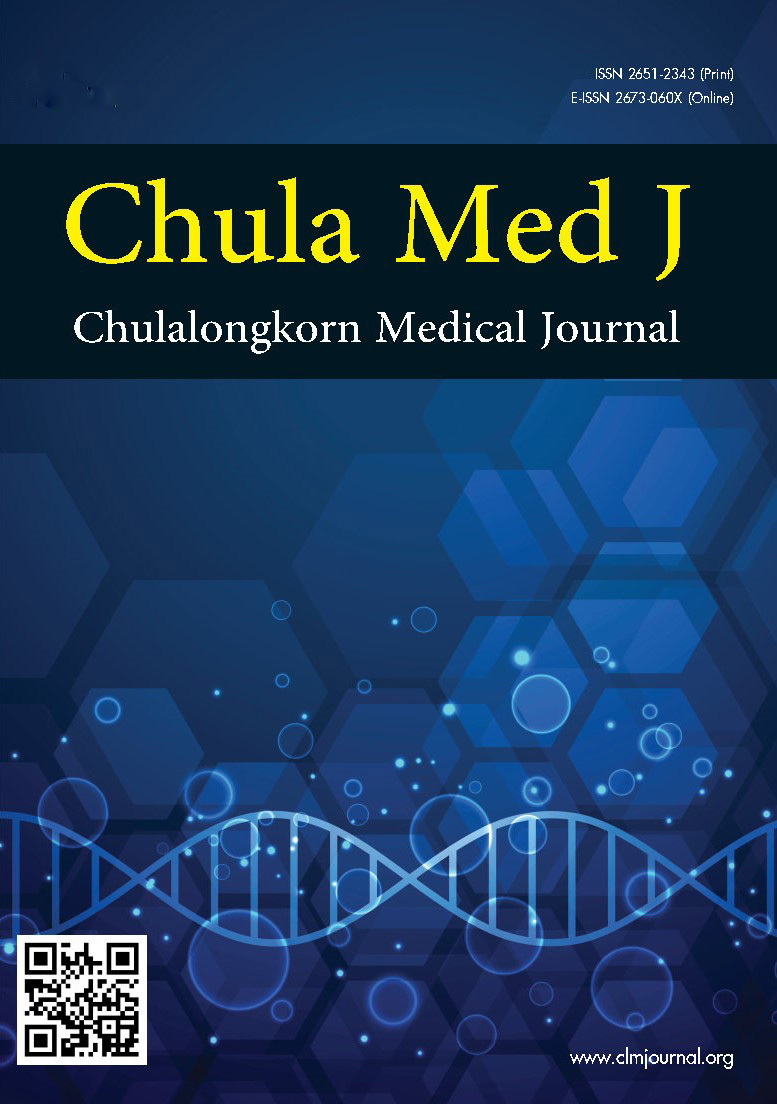Blood TNF-α and GABRA-1 levels in individuals with poor ovarian response who underwent in vitro fertilization
Keywords:
Apoptosis, in vitro fertilization, ovarian response, pro-inflammatory cytokineAbstract
Background: Poor ovarian response (POR) to ovarian stimulation during in vitro fertilization (IVF) procedures is a critical issue that contributes to decreased ovarian reserves and cancelation of IVF cycles. Nevertheless, the complete etiology of this condition remains poorly understood.
Objective: This study aimed to determine the levels of a blood pro-inflammatory cytokine (TNF-α) and apoptotic marker (GABRA-1) between patients exhibiting normal ovarian response (NOR) and those with POR during the process of IVF.
Methods: This was a cross-sectional study that involved the collection of whole blood from 25 participants (NOR group n = 15, POR group n = 10). The relative gene expression levels of TNF-α and GABRA-1 were assessed using reverse transcription quantitative polymerase chain reaction.
Results: Our findings indicated that the relative gene expression levels of TNF-α were markedly elevated in the POR group compared with the NOR group (POR = 6.1 ± 1.8 vs. NOR = 3.1 ± 1.2, P < 0.001). Furthermore, a positive correlation was observed between the relative gene expression levels of TNF-α and various factors, including ovarian reserve (anti-Müllerian hormone), antral follicle count, and the total number of retrieved oocytes. In contrast, the relative gene expression levels of GABRA-1 did not exhibit any significant differences between the participant groups.
Conclusion: Elevated levels of TNF-α may be a crucial factor that contributes to the pathogenesis of POR, including diminished ovarian reserve and low quantity of retrieved oocytes, after ovarian stimulation and IVF programs.
Downloads
References
Badawy A, Wageah A, El Gharib M, Osman EE. Prediction and diagnosis of poor ovarian response: the dilemma. J Reprod Infertil 2011;12:241-8.
Zhang Y, Zhang C, Shu J, Guo J, Chang HM, Leung PCK, et al. Adjuvant treatment strategies in ovarian stimulation for poor responders undergoing IVF: a systematic review and network meta-analysis. Hum Reprod Update 2020;26:247-63.
https://doi.org/10.1093/humupd/dmz046
Tarlatzis BC, Zepiridis L, Grimbizis G, Bontis J. Clinical management of low ovarian response to stimulation for IVF: a systematic review. Hum Reprod Update 2003;9:61-76.
https://doi.org/10.1093/humupd/dmg007
Zhu Q, Li Y, Ma J, Ma H, Liang X. Potential factors result in diminished ovarian reserve: a comprehensive review. J Ovarian Res 2023;16:208.
https://doi.org/10.1186/s13048-023-01296-x
Terranova PF, Rice VM. Review: cytokine involvement in ovarian processes. Am J Reprod Immunol 1997;37: 50-63.
https://doi.org/10.1111/j.1600-0897.1997.tb00192.x
Zolti M, Ben-Rafael Z, Meirom R, Shemesh M, Bider D, Mashiach S, Apte RN. Cytokine involvement in oocytes and early embryos. Fertil Steril 1991;56: 265-72.
https://doi.org/10.1016/S0015-0282(16)54483-5
Huang Y, Cheng Y, Zhang M, Xia Y, Chen X, Xian Y, et al. Oxidative stress and inflammatory markers in ovarian follicular fluid of women with diminished ovarian reserve during in vitro fertilization. J Ovarian Res 2023;16:206.
https://doi.org/10.1186/s13048-023-01293-0
Lliberos C, Liew SH, Mansell A, Hutt KJ. The Inflammasome Contributes to Depletion of the Ovarian Reserve During Aging in Mice. Front Cell Dev Biol 2021;8:628473.
https://doi.org/10.3389/fcell.2020.628473
Terranova PF. Potential roles of tumor necrosis factoralpha in follicular development, ovulation, and the life span of the corpus luteum. Domest Anim Endocrinol 1997;14:1-15.
https://doi.org/10.1016/S0739-7240(96)00094-X
Field SL, Dasgupta T, Cummings M, Orsi NM. Cytokines in ovarian folliculogenesis, oocyte maturation and luteinisation. Mol Reprod Dev 2014;81:284-314.
https://doi.org/10.1002/mrd.22285
Silva JRV, Lima FEO, Souza ALP, Silva AWB. Interleukin- 1β and TNF-α systems in ovarian follicles and their roles during follicular development, oocyte maturation and ovulation. Zygote 2020;2:270-7.
https://doi.org/10.1017/S0967199420000222
Mabrouk DM, El Makawy AI, Ahmed KA, Ramadan MF, Ibrahim FM. Topiramate potential neurotoxicity and mitigating role of ginger oil in mice brain. Environ Sci Pollut Res Int 2022;29:87184-99.
https://doi.org/10.1007/s11356-022-21878-4
Sun X, Chen X, Zhao J, Ma C, Yan C, Liswaniso S, et al. Transcriptome comparative analysis of ovarian follicles reveals the key genes and signaling pathways implicated in hen egg production. BMC Genomics 2021 15;22:899.
https://doi.org/10.1186/s12864-021-08213-w
Ferraretti A, La Marca A, Fauser BC, Tarlatzis B, Nargund G, Gianaroli L. ESHRE consensus on the definition of 'poor response' to ovarian stimulation for in vitro fertilization: the Bologna criteria. Hum Reprod 2011;26:1616-24.
https://doi.org/10.1093/humrep/der092
Patil M. Monitoring ovarian stimulation: current perspectives. In: Allahbadia G, MorimotoY, editors. Ovarian stimulation protocols. New Delhi: Springer; 2016. p. 17-55.
https://doi.org/10.1007/978-81-322-1121-1_2
Horiuchi T, Mitoma H, Harashima S, Tsukamoto H, Shimoda T. Transmembrane TNF-alpha: structure, function and interaction with anti-TNF agents. Rheumatology (Oxford) 2010;49:1215-28.
https://doi.org/10.1093/rheumatology/keq031
Carswell EA, Old LJ, Kassel RL, Green S, Fiore N, Williamson B. An endotoxin-induced serum factor that causes necrosis of tumors. Proc Natl Acad Sci U S A. 1975;72:3666-70.
https://doi.org/10.1073/pnas.72.9.3666
Thum MY, Abdalla HI, Bhaskaran S, Harden EL, Ford B, Sumar N, et al. The relationship of systemic TNFalpha and IFN-gamma with IVF treatment outcome and peripheral blood NK cells. Am J Reprod Immunol 2007;57:210-7.
https://doi.org/10.1111/j.1600-0897.2006.00465.x
Naz, RK, Zhu X, Menge AC. Expression of tumor necrosis factor-alpha and its receptors type I and type II in human oocytes. Mol Reprod Dev 1997;47:127-33.
https://doi.org/10.1002/(SICI)1098-2795(199706)47:2<127::AID-MRD1>3.0.CO;2-O
Falconer H, Sundqvist J, Gemzell-Danielsson K, von Schoultz B, D'Hooghe TM, Fried G. IVF outcome in women with endometriosis in relation to tumour necrosis factor and anti-Müllerian hormone. Reprod Biomed Online 2009;18:582-8.
https://doi.org/10.1016/S1472-6483(10)60138-1
Manabe N, Matsuda-Minehata F, Goto Y, Maeda A, Cheng Y, Nakagawa S, et al. Role of cell death ligand and receptor system on regulation of follicular atresia in pig ovaries. Reprod Domest Anim 2008;43:268-72.
https://doi.org/10.1111/j.1439-0531.2008.01172.x
Moolhuijsen LME, Visser JA. Anti-Müllerian hormone and ovarian reserve: update on assessing ovarian function. J Clin Endocrinol Metab 2020;105:3361-73.
https://doi.org/10.1210/clinem/dgaa513
Glister C, Hatzirodos N, Hummitzsch K, Knight PG, Rodgers RJ. The global effect of follicle-stimulating hormone and tumour necrosis factor-α on gene expression in cultured bovine ovarian granulosa cells. BMC Genomics 2014;15:72.
https://doi.org/10.1186/1471-2164-15-72
Zhao XY, Li ZB, Yuan HJ, Han X, Wu JS, Feng XY, et al. Restraint stress and elevation of corticotrophinreleasing hormone in female mice impair oocyte competence through activation of the tumour necrosis factor-α (TNF-α) system. Reprod Fertil Dev 2020;32: 862-72.
https://doi.org/10.1071/RD20002
Terranova PF, Hunter VJ, Roby KF, Hunt JS. Tumor necrosis factor-α in the female reproductive tract. Proc Soc Exp Biol Med 1995;209:325-42.
https://doi.org/10.3181/00379727-209-43905B
Montgomery Rice V, Limback SD, Roby KF, Terranova PF. Tumor necrosis factor alpha inhibition of folliclestimulating hormone-induced granulosa cell estradiol secretion in the human does not involve reduction of cAMP secretion but inhibition at post-cAMP site (s). Endocrine 1999;10:19-23.
https://doi.org/10.1385/ENDO:10:1:19
Hortal M, Fabregat A, Lledo B, Ortiz JA, Moliner B, Bernabeu A, et al. IL-6/IL-10 and IL-1β/IL-4 ratios associated with poor ovarian response in women undergoing in-vitro fertilization. Eur J Obstet Gynecol Reprod Biol 2023;280:68-72.
https://doi.org/10.1016/j.ejogrb.2022.11.012
Steudle F, Rehman S, Bampali K, Simeone X, Rona Z, Hauser E, et al. A novel de novo variant of GABRA1 causes increased sensitivity for GABA in vitro. Sci Rep 2020;10:2379.
https://doi.org/10.1038/s41598-020-59323-6
Wang L, Liu Y, Yu Z, Gong J, Deng Z, Ren N, et al. Mir- 139-5p inhibits glioma cell proliferation and progression by targeting GABRA1. J Transl Med 2021;19:213.
https://doi.org/10.1186/s12967-021-02880-9
Stringer JM, Alesi LR, Winship AL, Hutt KJ. Beyond apoptosis: evidence of other regulated cell death pathways in the ovary throughout development and life. Hum Reprod Update 2023;29:434-56.
Downloads
Published
How to Cite
Issue
Section
License
Copyright (c) 2025 Chulalongkorn Medical Journal

This work is licensed under a Creative Commons Attribution-NonCommercial-NoDerivatives 4.0 International License.







